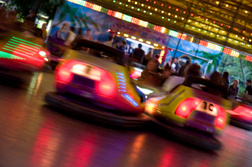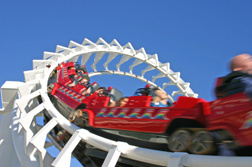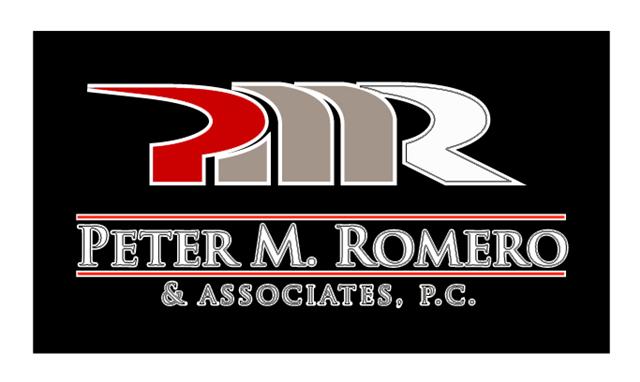Amusement Park Accident
Although amusement parks can be fun places to visit or work, amusement park accidents can be serious events, resulting in permanent injury and even death to victims. Wrongful death lawsuits have been filed against some amusement parks, alleging amusement park accidents resulted in amusement park deaths. Other serious amusement park injuries include whiplash, neck and back injuries, heart attacks, broken bones and internal injuries. Visitors to parks, park employees or contracted workers can all be involved in amusement park accidents and may all be eligible to file a claim in the event of an amusement park injury.
Amusement Park Accidents
 Amusement park accidents involve incidents that occur in all types of amusement parks. These include large-scale parks, such as Disneyland or Disney World, Six Flags theme parks, and water parks down to smaller, traveling carnivals, animal parks, state fairs and school carnivals. Accidents occur at all types of amusement parks, carnivals and fairs and can involve park guests and outsourced workers who maintain the grounds.
Amusement park accidents involve incidents that occur in all types of amusement parks. These include large-scale parks, such as Disneyland or Disney World, Six Flags theme parks, and water parks down to smaller, traveling carnivals, animal parks, state fairs and school carnivals. Accidents occur at all types of amusement parks, carnivals and fairs and can involve park guests and outsourced workers who maintain the grounds.
Such amusement park accidents can even happen at local events that supply amusement park-style attractions. One such incident occurred in New York, when a gust of wind caused inflatable bounce houses to become airborne with children inside. Thirteen people were injured, including one woman who suffered spinal injuries and was listed in critical condition.
The people who own and operate amusement parks have a legal responsibility to ensure the people who visit their parks are not involved in amusement park accidents. That includes ensuring the property and the attractions on the property are properly maintained and kept in a reasonably safe condition. If an amusement park injury occurs and that injury could have been prevented if the amusement park took reasonable steps, the injured person may be able to sue for compensation for any amusement park injuries.
Depending on the circumstances of the amusement park accident, legal responsibility for harm done to visitors could rest on the amusement park owner, the ride designer or manufacturer, the ride operator or a ride or a concession stand owner. Among claims made against defendants are wrongful death, negligence, slip and fall injury (premise liability) and defective product claims.
Amusement Park Accident Statistics
According to the International Association of Amusement Parks and Attractions (IAAPA), there were approximately 1,343 ride-related injuries in the US in 2008. Of those, 80 injuries were reported as “serious,” which meant they required overnight treatment in a hospital for purposes other than observation.
However, not all injuries are obvious immediately following the accident. For example, a person could suffer what seems like a minor neck injury while on a ride only to discover days later that she has whiplash. Or a person could experience stomach pain while on a ride but ignore it at first, only discovering later that she has internal injuries.
Theme Park Injuries
 Theme park injuries can be serious and life-threatening. Roller coaster accident injuries and personal injuries sustained on other rides include traumatic brain injury,back and neck injury, whiplash, broken bones, heart attack and internal injuries. Injuries can also occur when park guests suffer falls from rides, such as an 11-year-old who died in an amusement park accident after falling from a ferris wheel.
Theme park injuries can be serious and life-threatening. Roller coaster accident injuries and personal injuries sustained on other rides include traumatic brain injury,back and neck injury, whiplash, broken bones, heart attack and internal injuries. Injuries can also occur when park guests suffer falls from rides, such as an 11-year-old who died in an amusement park accident after falling from a ferris wheel.
Traveling carnivals and street fairs have their own risks. Many of them run electrical wiring on the ground, where people can easily trip over the wires or, in extreme cases, step in the wrong spot and receive electrical shocks or burns. Furthermore, the rides and attractions are put up and taken down regularly, leaving them open to the possibility that they might not be properly set up, resulting in injury to carnival goers. The continual setup and break down of rides can also lead to wear and tear on machinery and parts resulting in possible ride malfunction and injury.
Animal parks also come with their set of risks. Although the animals may look cute to touch or fun to ride, animals are unpredictable and can act out, causing injury to park employees and visitors.
Water Park Injuries
People can also suffer serious, life-threatening water park injuries. Water park owners and operators have a responsibility to ensure that guests are safe from preventable harm while at the water park. Preventable accidents include accidental downing, slip and fall injuries and injuries caused by improperly maintained water rides.
Water parks must maintain adequate staff to guest ratios–particularly on rides such as wave pools where crowd control can become an issue if lifeguards cannot effectively see swimmers. Lifeguards and water park staff also need to be able to stop the “wave” action of the wave pool in an emergency.
Lax adherence to or monitoring of minimum age and/or height requirements on water rides by water park staff can also lead to water park accident and injury. Some water park rides may require use of a life preserver or life jacket which, if not properly maintained by the water park–or if worn improperly or not worn at all–could lead to water park injuries.
Ski Park Injury
Ski Parks, including ski and snowboard hills, are very popular in the winter months. But because they involve traveling downhill at fast speeds, often with very little protection, they can also be dangerous. Ski resort injuries can result in traumatic brain injury, paralysis and even death. It is up to the owners and operators of ski resorts to ensure the ski hill, including the lift facilities, chalets and cabins, are safe for all guests and employees. Although it is up to skiers and snowboarders to remain in control while skiing on the hill, ski resorts may be liable if ski resort accidents are caused by poor maintenance on the slopes or property, unmarked hazards, negligence or improperly trained employees.
Cruise Ship Injury
In winter months, many tourists flock to warmer climates to escape the cold. But if guests are harmed while onboard, the owner and operator of the cruise ship, as well as those responsible for maintaining it, could be held liable. This includes incidents such as slip and fall accidents, food poisoning, theft, water slide or swimming pool accidents, accidents at ports of call, physical or sexual assault by crew members, medical negligence, or any other injuries that might arise from improper maintenance or operation of the ship.
Spa Injury, All-Inclusive Resort Injury and Resort Injury
Just as tourists may visit cruise ships in the winter, they may also visit warm-climate resorts. Those resorts and tour operators have an obligation to ensure guests are safe from undue harm while onsite. This includes serious injury, contaminated or improperly cooked food, physical or sexual assault from staff members, slip and fall injuries, swimming pool accidents and accidents while on a sponsored tour. Resort and tour operators are responsible for ensuring that their operations are free from hazardous conditions and have proper emergency care and procedures in place to protect their guests.
Amusement Park Accidents Involving Workers
Many workers at amusement parks and carnivals are outsourced workers who maintain the grounds or operate the rides. Such amusement park jobs include ticket attendants, concessions workers, ride operators, game operators, costumed characters, cleaning staff, and repairmen. Contracted amusement and theme park workers, however, are susceptible to injury and even death while working on the grounds and may not have the same workers’ compensationcoverage as regular employees. Outsourced workers who are injured while working on fairgrounds may be eligible to file a lawsuit if their injury was the result of negligence on the part of the carnival owner or operator.
Employees at animal parks are also at risk of injury. Even the most seemingly tame animals are unpredictable and can act out, causing serious, life-threatening injury to their caregivers and groundskeepers. Last year, a trainer at SeaWorld Orlando was killed when an orca whale grabbed her and dragged her under the water, showing how vulnerable trainers can be to sudden harm.
Amusement park owners and operators have a responsibility to ensure that employees and other workers have a safe working environment. That means ensuring that workers are properly trained to operate machinery, that there are adequate safety controls and measures in place, and that rides and other equipment are all properly maintained and functional. Failure to do so can make the amusement park owner and/or operator liable for any injuries sustained as a result.
Amusement Park Accident Attorney
Depending on what state the amusement park is in and depending on the type of lawsuit being filed negligence, personal injury and so on the statute of limitations varies. An experienced attorney can help determine the statute of limitations in your situation and help ensure you receive proper compensation for any harm done to you or a loved one.
Amusement Park Accident Legal Help
If you or a loved one has suffered damages in this case, please contact at 505.999.9999

